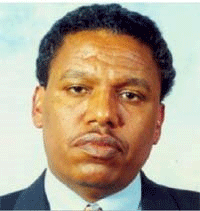
Compiled and researched by Resoum Kidane

From the late 1880s, the Italian administration launched its first development projects in Eritrea The first railway line connecting Massawa to Saati, 27 kilometers inland from the coast, was completed in 1888 and it reached Asmara in 1911. In addition, in the early 1900s, the Italians built an infrastructure of ports, roads, telecommunications, factories by the end of the Italian colonialism there was clear evidence of good transportation and communication services as well as a good standard of light industries present during the Italian colonisation.
Firebrace (1984) also noted that in 1939 there were over 846 registered transport companies, 642 construction works, 198 trade companies and 728 light industries in Eritrea. Most of these were located in urban areas such as Asmara, Dekemhara, Massawa and other towns, causing a migration of the rural population towards the urban centres to work in companies and other services. Among the rural population, many also worked on plantations or for companies in their local areas as daily labourers. Growth of light industries and communication infrastructure continued after the defeat of the Italians in 1941 due to Eritrea’s strategic importance for American and British military operations in the region.
However this development ceased after WW II and a number of factories were closed down. Unemployment was exacerbated further when the British administration in Eritrea removed and sold an estimated £86 million worth of industrial plant and equipment, including port facilities.

Fig 1 shows the dismantling of Eritrean cement work in 1947. Source: Firebrace, James (1984)
In1948 when a number of factories were closed down and removed by the British administration in Eritrea the number of unemployed people reached 14,000 (10,000 Eritreans and 4,000 Italians). According Gottesman (1998 page 44) in 1948, the worest year of the post-war depression, 637 businesses closed and 10, 000 Eritreans became jobless. Combined with increased local taxation, the large scale unemployment contributed to the growth of political consciouness among Eritrea's urban working class.
Even though the growth of Eritrea's economy was jeopardised with the closing down of 637 businesses in 1948, many foreigners were still encouraged to invest in Eritrea rather than in Ethiopia between 1952 and 1962, the underlying reasons were that Eritrea had a skilled labour force and good transport infrastructure, including access to the Red Sea.
Connel l( 2011, page 310) states that after 1952, new industries were developed, principlally by the Italian population, to serve the markets of Ethiopa, including meat, fruit and vegetable canning, particularly on the De Nadai estates, and textile production in Asmara, beginning with the Barattolo factory in 1956, and Ethio-Textiles Share Company in the 1960s.
Brief information on the Barattolo factory excrept from Roberto Barattolo and the Eritrean Textile Industry

[After the Second World War, Roberto Barattolo amassed capital in Eritrea, taking advantage of the economic opportunities to build Asmara’s first cotton textile factory. With production beginning in 1956, and Barattolo was able to gain a large share of the Ethiopian market. Cotonificio Barattolo quickly became the largest cotton mill in Eritrea. The then pre-federated Eritrean government injected $315 thousand dollars into the company between 1956 and 1961, providing 30% of Cotonificio Barattolo’s capital. In less than a decade its production capacity had reached 20,000 spindles and 400 looms able to produce any kind of cotton, grey yarn and fabric. Cotton production grew from 1,836 tons in 1962 to 4,000 tons in 1965. Cotonificio Barattolo monopolized the Ethiopian and Eritrean markets, its first completion came in 1966 when the Ethiofabrics plant was founded. The factory employed nearly 3,000 workers, of whom 70% were women. Its success was cut short when in 1975 the factory was nationalized by the DERG and Barattolo was forced to depart, though he eventually received compensation from the Italian government source Roberto Barattolo and the Eritrean Textile Industry]
Already established Italian industries, such as the Melotti brewery, SAVA glass company, and others continued and even expanded their production. But these industries failed to offset the decline in other sectors of the manufacturing and transport economy, as many factoroes closed or were moved to Addis Ababa and Kenya. Additionally, as a consequence of the 1958 General Strike which was led by the Workers' Syndicate, the Ethiopian government banned trade unions and closed many industries which was caused for the number of workers in Eritrea declined from 32,400 (27,000 Eritreans; 5,400 Italians) to 10,350 (10,000 Eritreans; 350 Italians).
As a consequence of unemployment, the urbanised Eritrean population, who originally came from rural areas, could not return to the countryside, because the skills which they had acquired during the period of Italian colonial rule and British administration could not be applied in the agricultural sector. During Italian colonialism the number of local people who were working in companies, road construction and on plantations was much higher in Eritrea than in the rest of the colonies in Africa. According to Killion (1995) 20% of the Eritrean population was urbanised, which was unusual for this region of Africa in the colonial era as compared to, for instance Tanzania where only 7% of the population lived in urban areas.25
Furthermore, the Emperor deliberately imposed high taxation on foreign investors who wished to invest their own capital in Eritrea or cancelled agreements between foreign investors and the Eritrean government. Among the cancelled agreements was the proposal between Fiat and the Eritrean government to establish a Fiat factory in the town of Dekemhara. This was to further weaken the Eritrean economy and discourages foreign investment from Eritrea. As a result, the number of unemployed increased. The economic development of Dekemhara was also adversely affected when a new transport infrastructure route access to the Red Sea port of Assab was completed and the route access to the Red Sea diverted from Massawa to Assab. [ Dekemhare was originally designed to be the industrial center and transport hub of Eritrea.]All the above considerable contributed to the growth number of unemployment in the 1950s and 1960s.
By contrast, in the1950s and 1960s, Ethiopia received economic assistance, estimated at $84.4 million from the US including a loan of $19.4 million for modernizing the country(Griffin, 1992 The Ethiopian government also encouraged other investors, who wished to invest their capital in food manufacturing and plantation through building and surfacing roads to improve access to remote coffee farming areas ( Wellega, Illibabur, Kaffa provinces etc) for promotion of cash crops
In the light of the above most Eritrean skilled workers migrated to Ethiopia either for finding work or to establish their own businesses.

Source: from the statement by the delegation of the State of Eritrea to the UNHRC, 4th August 1998
According to Bairu(2016, page 83) In the 1950s the Eritrean community in Ethiopia was large and influential. The majority of them were concentrated in Addis ABABA. The leaders of the community were Eritreans who fought on the side of Ethiopia during the Italian Ethiopian war. Many of these were Minister and Generals, and a large number operated in the higher echelons of the bureaucracy, the armed forces and the police. Many Eritreans who came with the invading Italian army, were part of Ethiopian society. During the period of decolonization of Eritrea, the Emperor enconcouraged Eritrean youth to study in Ethiopa. The need to influence the results of Eritrean decolonization in favor of Ethiopia motivated this policy. As a result, there evolved a dynamic strtum of educated Eritreans in Ethiopia.
Salem Solomon (2013) also states that my mother grew up at a time when Ethiopia forcefully annexed Eritrea and attempted to undermine the intellectual strength of the country by shifting all higher education to its capital in Addis Ababa. The goal was to co-opt the energy and intelligence of the best and the brightest of the country. During this time, Haile Selasie, the emperor of Ethiopia, held campaigns calling all high school students to migrate to Ethiopia. Advertisements on radio and newspapers targeted young students and provided opportunities in Ethiopia
Indeed most Eritrean skilled workers who arrived between 1957 and 1975 in Ethiopia succeeded in securing jobs in road construction, transportation service and in the food and textile manufacturing industries, the reason being that they had already acquired skills such as welding, driving, installing electricity, constructing dams and other various building and manual abilities which played an important role in modernizing Ethiopia.
Regarding this Erlich pointed out that one factor of the considerable socio‑economic development in Ethiopia was the growing participation of Eritreans in Ethiopian national life, which was able to supply Ethiopia with the necessary manpower (1950‑1960s and early 1970s).
Spencer (1984: page 303) adds that while large numbers of Shoans came to occupy the federal offices in Asmera and Massawa, the influx of Eritrean into Addis Ababa was on a much large scale. Denial employment under the Italian and British regimes, they came to Ethiopia in such numbers as gradually to dominate the Ethiopia Air Force and police, 40% percent of the Army officer corps, much of the telecommunication and nearly 100% percent of the taxi, drivers in Addis Ababa. The Eritreans soon proved themselves to be the Irish of Ethiopia
The participation of Eritrean migrants in the field of skilled labour in business and foreign trade meant that Ethiopia thrived by becoming a more modern and faster developing country. The active participation of Eritreans also reached its peak within the Ethiopian government and the armed forces. This led to General Aman Andom becoming the first Head of State after the Emperor was deposed in September 12, 1974..
However, this development ceased after General Aman Andom and other air force officials were executed on November 23, 1974. Since then Eritreans who were in the Ethiopian army, the air force and navy became main targets of the Ethiopian military regime. The regime also targeted other Eritrean intellectuals and professionals holding key posts in government organizations, accusing them of being members of the Eritrean Clandestine Political Organization. Under these circumstances, most of them left for other countries to seek sanctuary and escape the consequence of torture and imprisonment. This resulted in the decline of Eritrean migration to Ethiopia between 1975 and 1991 it clearly shows from above graph..
Therefore, one would assume the building of modern Ethiopia could not have succeeded without the participation of skilled workers and other intelligentsia from Eritrea. Those Eritrean skilled workers who migrated to Ethiopia had made a tremendous contribution in building the modern Ethiopia in 1950s and 1960s. Unfortunately their own second generations were deported from Ethiopia in 1998 since Eritrean treats as second class and denying any rights of jobs, and property ownership.
Crimes committed During the border conflict by Melese and Seye Abraha Read more


Melese and Seye Abraha
"If we say leave, because we do not like the colour of your eyes they have to leave the country..."July 9, 1998,Prime Minster Meles Zenawi
It is worthwhile to mention that the declined of economy for more than three decades contributed for Eritrean labours migrated to Ethiopia, Sudan and the Middle East. During the 30 years liberation war these migrants also greatly contributed for the achievement victory in 1991 through supporting the liberation struggle financially.
[Back to the Table of contents]-------- [NEXT PAGE]
ehrea.org © 2004-2017. Contact: rkidane@talk21.com | ||||